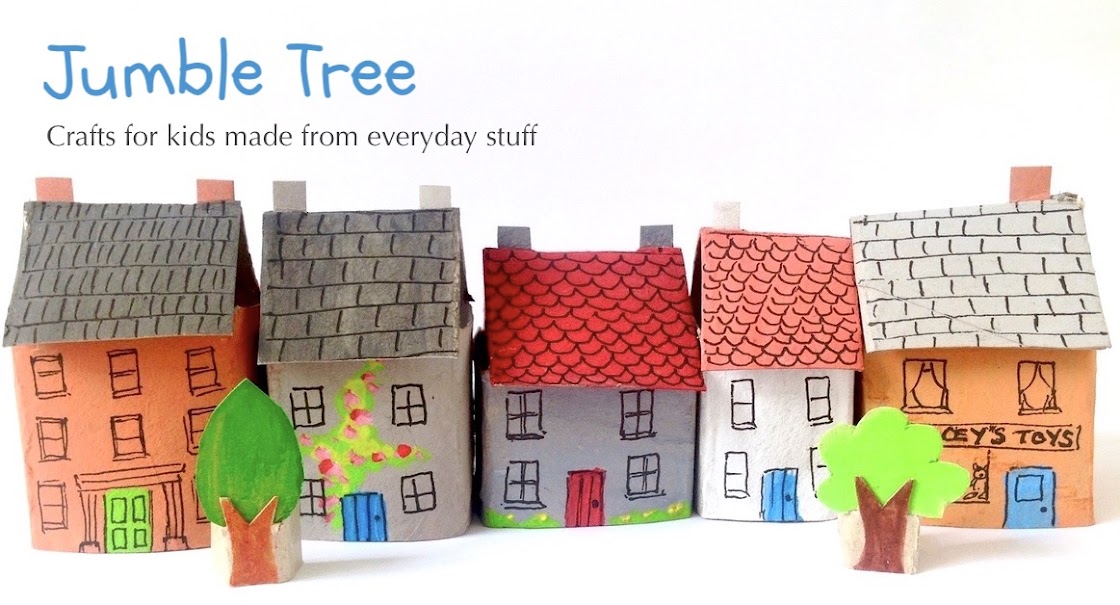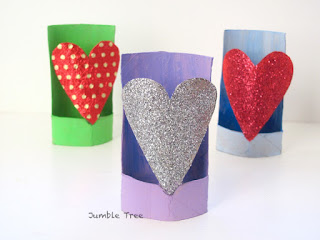The units we made in the last kitchen project are ready to be fitted, so it's time to sort out the walls and the floor!
You'll need:
Cereal box card
Wrapping paper or paint (optional)
Pencil
Ruler
Scissors
Craft glue
Glue stick
Plain paper
Felt-tip pens
Self-adhesive postage labels
1. We covered our kitchen walls with wrapping paper - this isn't the easiest job, but it does look great, even with a few bubbles and wrinkles here and there.. But you don't have to cover the walls at all, or you could simply paint them.
2. If you're wallpapering, you'll be covering the two short ends and the back. Start by carefully drawing around the base of the box with a pencil, on the back of your paper - then draw around the two ends.
Cut the pieces out. They'll probably end up a little bigger than you need, but better too big than too small.
3. Stick the sides in first. You only need a thin layer of glue on the box. I find a glue stick rubbed over the cardboard is a good way to do this with kids, though you will get through a fair amount of it! Line each piece up with the edge of the box and the top (ceiling) corner, so any extra paper will go on the back wall and on the floor and can be covered later.
Try the back piece of wallpaper for size first before gluing. If it's far too wide, trim a little, but make sure it still covers the joins with the side walls. Don't worry too much about the height, line it up with eh back edge of the ceiling, and smooth down, so any extra paper will be hidden under the kitchen floor.
4. While that's drying you could make a splash back for your kitchen units, though again, leave this step out if you want.
Measure the length of your units on some spare cereal box card and use a ruler to draw a long strip, about 2cm wide. we measured and drew squares on ours, but there's no need to do this. Paint your strip and at the same time you could paint another corner of card for the shelves.
Cut out your splash back, mark where the top of the units touches the back wall, on both ends - then stick down the strip of card, so the bottom of the splash back is just below the marks you've made.
5. For the floor, cut a large piece of cereal box card that's the length of your shoebox, but make it wider than the sides, about 3cm wider, otherwise we're not going to have masses of room for the table and chairs (next time!). Again, you can leave the floor plain, or paint or colour it in. We measured out squares again, and coloured them in with a felt-tip pen.
(didn't bother drawing squares on the back line, as this will be covered up by the kitchen units)
Glue down the floor. Weigh it down with books will the glue dries.
6. What about a window? Ours is 8x7cm - measure it out on the corner of a plain piece of paper.
Use pens or paint to draw a scene you'd like to see out of your window! Once you're happy, cut it out. Sticky postage labels are really handy for the window frame. Use a ruler and pencil to draw thin strips and cut them out. Peel off and stick around your window. Trim the extra bits away.
Rub some glue stick on the back of the window and stick it just above the splash back, behind the sink.
7. For the shelves, cut out two strips from your painted (or plain) card. Ours are 2cm wide and 8cm long. Fold them in half lengthways, and press firmly along the fold. Then glue the shelves onto the wall. Leave your kitchen on its back while the glue dries.
Next time, a bit of furniture...




















































